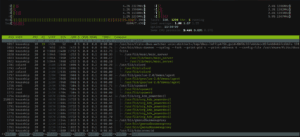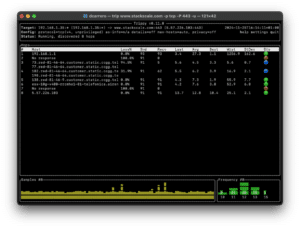In the evolving landscape of cloud computing and containerized environments, Traefik has emerged as a powerful, dynamic, and cloud-native reverse proxy and load balancer. Unlike traditional solutions like HAProxy, NGINX, or Apache, Traefik is specifically designed to integrate seamlessly with container orchestration platforms, microservices, and cloud-native infrastructure.
This article explores the history of Traefik, its advantages, key features, a comparison with other load balancing solutions, and why businesses and cloud providers such as AWS, Microsoft Azure, Google Cloud, Stackscale (Grupo Aire), OVH, Hetzner, and Equinix are implementing it in their environments.
The History of Traefik: A Cloud-Native Approach
Traefik was created in 2015 by Emile Vauge, a French software engineer, to address the need for dynamic and automated load balancing in modern microservices architectures. Traditional load balancers, such as HAProxy and NGINX, relied on static configurations, making them less suited for environments where containers and services frequently scale up and down.
To solve this, Traefik introduced automatic service discovery, enabling it to adapt dynamically to changes in infrastructure without requiring manual configuration updates. Today, Traefik Proxy is one of the most widely used cloud-native reverse proxies, deployed across thousands of Kubernetes, Docker, and cloud-native environments.
Why Choose Traefik? Key Advantages Over Other Load Balancers
1. Cloud-Native and Kubernetes-First Design
Unlike traditional load balancers, Traefik is built from the ground up for cloud-native applications. It seamlessly integrates with Kubernetes, Docker, Amazon ECS, HashiCorp Nomad, and other orchestration platforms.
2. Dynamic Configuration with Auto-Discovery
Traefik eliminates the need for manual configuration by automatically detecting new services as they are deployed. This is especially valuable in microservices environments where services frequently change.
3. Easy Integration with Let’s Encrypt and SSL/TLS Management
SSL termination is fully automated with Traefik, offering built-in Let’s Encrypt support for managing certificates dynamically.
4. Native Support for HTTP/2 and gRPC
Traefik offers out-of-the-box support for HTTP/2 and gRPC, making it a great choice for modern web applications and APIs.
5. Integrated Observability and Metrics
With built-in Prometheus, Grafana, and OpenTelemetry support, Traefik provides real-time monitoring and analytics for better performance insights.
6. Multi-Protocol Support (HTTP, HTTPS, TCP, UDP)
Traefik supports Layer 4 (TCP/UDP) and Layer 7 (HTTP/HTTPS), allowing it to load balance web applications, databases, and messaging services.
7. Simple Deployment and Configuration
- Single-binary deployment – no complex dependencies.
- Configuration via labels in Docker, Kubernetes, and other orchestration platforms.
- Lightweight and optimized for low resource consumption.
Feature Comparison: Traefik vs. Other Load Balancers
| Feature | Traefik | HAProxy | NGINX | Envoy |
|---|---|---|---|---|
| Cloud-Native | Yes | No | No | Yes |
| Service Auto-Discovery | Yes | No | No | Yes |
| Container-Orchestration Support | Yes (Kubernetes, Docker, ECS, Nomad) | Limited | Limited | Yes |
| Load Balancing Algorithms | Round-robin, Least Connections, Custom | Advanced | Basic (in Open Source) | Advanced |
| Dynamic Routing | Yes | No | No | Yes |
| SSL/TLS & Let’s Encrypt | Automatic | Manual | Manual | Automatic |
| API-Driven Configuration | Yes | No | No | Yes |
| Best Use Case | Kubernetes & Microservices | Traditional Load Balancing | Web Servers & APIs | Service Mesh |
Traefik vs. Other Load Balancing Solutions
1. Traefik vs. HAProxy
- HAProxy is optimized for high-throughput traffic in traditional network environments.
- Traefik excels in containerized and cloud-native deployments with dynamic service discovery.
- HAProxy requires static configuration, while Traefik updates automatically based on infrastructure changes.
2. Traefik vs. NGINX
- NGINX is often used as a web server with load balancing capabilities, while Traefik is a dedicated cloud-native reverse proxy.
- Traefik simplifies SSL management with automatic Let’s Encrypt integration, whereas NGINX requires manual configuration.
- NGINX is better for static content hosting, while Traefik is ideal for microservices-based environments.
3. Traefik vs. Envoy
- Envoy is designed for service mesh architectures, providing deep observability and complex traffic management.
- Traefik is easier to deploy and does not require a service mesh framework.
- Envoy is more feature-rich, but Traefik offers a simpler configuration model.
Where and Why to Implement Traefik?
1. Cloud and Kubernetes Deployments
Traefik is one of the most popular ingress controllers in Kubernetes, widely used in AWS, Azure Kubernetes Service (AKS), Google Kubernetes Engine (GKE), and private cloud providers like Stackscale, OVH, and Hetzner.
2. Microservices and API Gateway
Traefik is perfect for dynamic microservices architectures, handling service discovery and automatic routing for applications running on Docker, Nomad, and Kubernetes.
3. DevOps and CI/CD Pipelines
Traefik simplifies deployment processes by automating routing and SSL certificate management, making it ideal for CI/CD pipelines in modern DevOps environments.
4. Serverless and Edge Computing
Traefik is highly efficient for serverless applications and edge computing, reducing latency and improving response times for distributed workloads.
5. Hybrid Cloud and Multi-Cloud Environments
With multi-cloud support, Traefik is used across AWS, Microsoft Azure, Google Cloud, Stackscale, DigitalOcean, and private cloud providers to manage hybrid and multi-cloud traffic routing.
Conclusion: Traefik as the Future of Cloud-Native Load Balancing
Traefik is an ideal solution for cloud-native architectures, Kubernetes, and modern DevOps workflows. Its ability to dynamically adapt to infrastructure changes, combined with automatic SSL management, observability tools, and API-driven configuration, makes it one of the most innovative and flexible load balancers available today.
For organizations looking to scale applications efficiently, enhance security, and simplify traffic management, Traefik provides a powerful and automated solution that seamlessly integrates with modern cloud and containerized environments. As cloud-native computing continues to grow, Traefik is well-positioned to remain a leading choice for the next generation of application delivery and load balancing.












